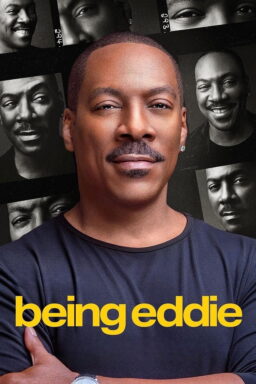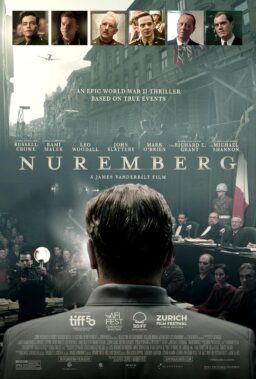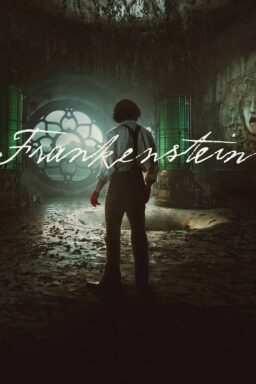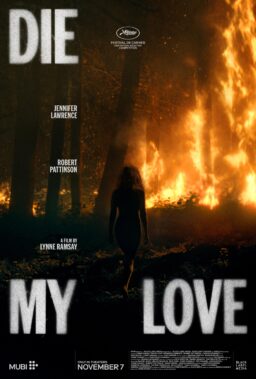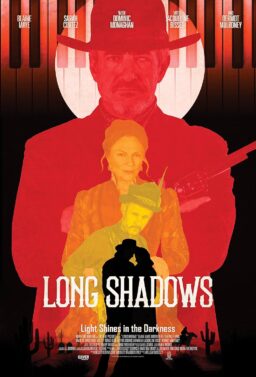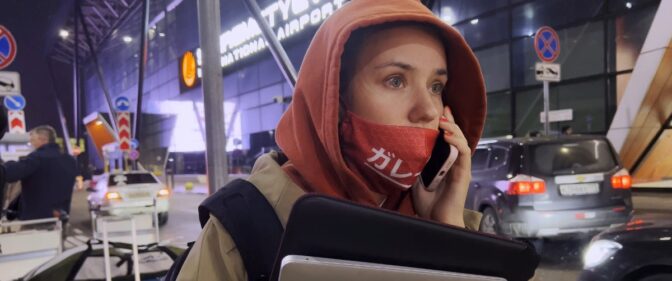It is not often, in modern television, that just about everything goes right. A series featuring dynamite performances might have terrible dialogue; a weak score and poor lighting can drag down even the best editing. On rare occasions, however, when the foundation (i.e., the writing) is solid, the cinematographer, director, and editor have the wisdom to step back and let the actors drive the story. To pull this off, you need heavyweights, like Matthew Rhys and Claire Danes, who star in Netflix’s new limited series “The Beast in Me.” A morbid soul like myself would have preferred the series to further amp up its darkness quotient, but for an eight-episode watch amongst a vast sea of dreck, this is damn good stuff.
The story and setting evoke “Succession” and “All Good Things.” Nile Jarvis (Rhys, the Peter O’Toole of American TV) is a billionaire real estate scion who moves to a heavily wooded neighborhood of Oyster Bay, New York, with his second wife, Nina (Brittany Snow), under a cloud of suspicion due to the disappearance of his first wife, Madison. His neighbor is author Aggie Wiggs (Danes, excellent), whose slowly collapsing house is a metaphor for the wreckage of her life: after the death of their young son in a car crash, Aggie and her wife Shelley (Natalie Morales) divorced, leaving the former alone to brood, rage, and generally disconnect from the world.
Nile and Aggie have what I like to call a meet-brute, two egos clashing, one’s anger and resentment on the surface (Aggie, rejecting Nile’s proposed plan for a jogging path easement in the neighborhood’s communal woods), the other’s overt conniving rooted in a ruthless charm. It’s this scene that sets the tone for the entire series: Director Antonio Campos (“The Staircase”), who helmed all eight episodes, blocks the shot in a way that immediately sets up the power dynamics between Nina, Aggie, and Nile. Cinematographer Lyle Vincent’s camera shoots into corners to make the space feel larger, emptier, scarier. Editors Philip Carr Neel and Ralph Jean-Pierre, who share editing duties throughout the series, make consistently deft choices, cutting at the right moments to add to the narrative and framing Rhys and Danes separately to further their opposition.
Aggie’s curiosity in Niles’ notoriety gives way to a helluva proposal: he suggests she abandon her going-nowhere-fast current project (a book about the unconventional friendship between Ruth Bader Ginsburg and Antonin Scalia) and write a book about him instead, to redefine his public image and explore who he really is. Aggie, operating under multiple motives, agrees, and chasing the truth of a possible murder rouses her from a sort of living death. Tom Hiddleston once compared the magic of acting to a tennis rally, saying that the best work came from watching a scene partner send the ball cross-court and having the chance to return it.
There is no better way to describe watching Rhys and Danes. The latter has one of the most expressive faces in show business; her trembling chin, cheekbones contorted by sorrow, are just as arresting as her brow furrowed in fury, eyes widened in unseemly exhilaration. As for Rhys, he’s spent the last few years playing misanthropic but ultimately well-meaning sad sacks (“Perry Mason,” “Towards Zero”). Watching him play a man who may or may not have killed his first wife, who flirts with sociopathy but somehow also elicits empathy for his own traumatic childhood, is a thrill ride bar none. Rhys flows between insults, physical aggression, and charisma with petrifying ease, oozing a toxic magnetism that lures you, though you know damn well he might sink his teeth in and never let go. Plus, watching him swing his hips to the Talking Heads might just be the sexiest scene of TV you’ll see all year. Casting directors Julie Tucker and Kim Krakauer, take a bow.
So, who is our Logan Roy? None other than Jonathan Banks, of course, who brings his trademark gruffness to Martin Jarvis, a billionaire unwilling to let anyone, least of all his son, tamper with his legacy. Though a Manhattan-based real estate subplot largely speaks to the series’ political cynicism (especially in light of mayor-elect Zohran Mamdani’s historic win), it does provide room for Banks and Rhys to spar, yet another delight! Whether or not Niles is guilty of murder, he is definitely an intimidating presence, but the only person who scares him is his father. Banks is one of those actors whose air is somehow unchanging yet flexible; close your eyes and he’s criminology professor Buzz Hickey from “Community,” open them and he makes sense as the ruler of a Long Island kingdom, attired in cashmere sweaters, eating political opponents as part of a healthy breakfast.
The supporting cast also punches its weight. Snow, who could barely make a dent in the hogwash that was “Hunting Wives,” proves her mettle as Nina, moving carefully in her marriage for reasons she’s not ready to share. Martin Jarvis’ second wife, Lila (Julia Ann Emery; in “Better Call Saul” terms, imagine Betsy Kettleman married to Mike Ehrmantrout), has a limited role but steals every scene she’s in, sometimes without speaking a single syllable. Hettienne Park, who has long deserved larger roles since standout work in “The Outsider” and “The Last of Us,” turns in a moving and anxiety-inducing performance as FBI Agent Erika Breton.
So if everything went right—including Loren Weeks’ exquisite production design (you will not find better wallpaper choices on television this year); the original score by Sara Barone, Sean Callery, and Tim Callobre is a near perfect blend of haunting synths; the writers’ room, too, had the wisdom to unfold twists and turns in a measured fashion that does not feel gimmicky, but instead feels like turning pages of a great thriller—then why three and a half stars and not four?
Without violating Netflix’s spoiler guidelines, “The Beast in Me,” from its very title, implies that everyone, under the duress of grief and its calcification into a limitless wrath, is capable of heinous acts. Danes and Rhys do a bang-up job, no doubt, of bringing two incredibly damaged people to life in very different ways. But the series could have taken more risks in blurring the lines between good and evil; after all, few of us are all good or all bad all the time.
‘Tis a mere quibble; this November, set aside your second screens and your laundry basket to give thanks for this artistic bounty.
Entire series screened for review.







